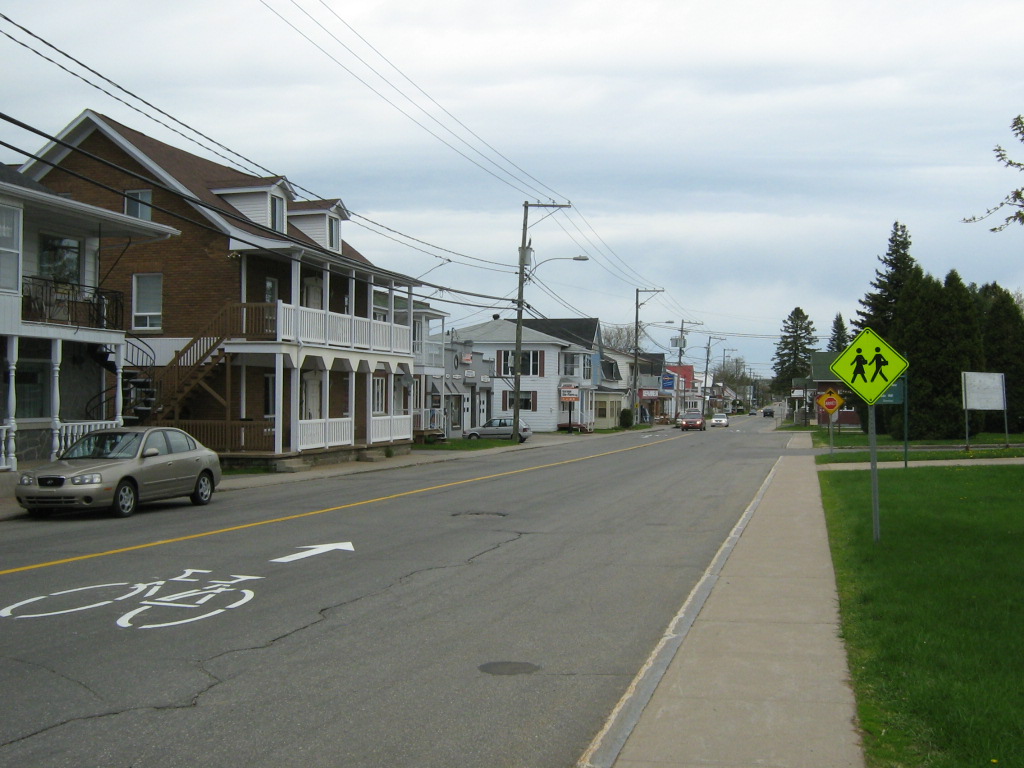Grand-Mère, Quebec on:
[Wikipedia]
[Google]
[Amazon]



 Grand-Mère (, ) is a settlement and former municipality in central
Grand-Mère (, ) is a settlement and former municipality in central
Commission de toponymie du Québec - Grand-Mère
{{DEFAULTSORT:Grand-Mere, Quebec Neighbourhoods in Shawinigan Former municipalities in Quebec Former towns in Canada Populated places disestablished in 2002



 Grand-Mère (, ) is a settlement and former municipality in central
Grand-Mère (, ) is a settlement and former municipality in central Quebec
Quebec ( ; )According to the Canadian government, ''Québec'' (with the acute accent) is the official name in Canadian French and ''Quebec'' (without the accent) is the province's official name in Canadian English is one of the thirtee ...
, Canada on the Saint-Maurice River
The Saint-Maurice River (french: Rivière Saint-Maurice; Atikamekw: ''Tapiskwan sipi'') flows north to south in central Quebec from Gouin Reservoir to empty into the Saint Lawrence River at Trois-Rivières, in the province of Quebec, in Canada. F ...
. As a result of the municipal reorganization in Quebec
A municipality is usually a single administrative division having corporate status and powers of self-government or jurisdiction as granted by national and regional laws to which it is subordinate.
The term ''municipality'' may also mean the g ...
which took effect at the beginning of 2002, Grand-Mère now forms part of the City of Shawinigan
Shawinigan () is a city located on the Saint-Maurice River in the Mauricie area in Quebec, Canada. It had a population of 49,349 as of the 2016 Canadian census.
Shawinigan is also a territory equivalent to a regional county municipality (TE) an ...
. Population in 2001 was 13,179.
History
Grand-Mère was founded in 1898. Like some of its neighbouring towns, it owes its economic origins to the St-Maurice river on which it is located. A major hydroelectric dam that was built on the river in 1916 was one of the oldest and largestHydro-Québec
Hydro-Québec is a public utility that manages the generation, transmission and distribution of electricity in the Canadian province of Quebec, as well as the export of power to portions of the Northeast United States.
It was established by the ...
generating stations. The dam was replaced by a larger dam in 2004. The abundance of relatively inexpensive electricity led to the development of industry, primarily based on the production of paper. Logs which were used for the paper pulp were floated downstream on the St-Maurice to the paper mill from more northerly areas. The mill, which has changed ownership over the decades, has had a lasting impact on the town, from the creation of its award-winning golf course to the construction of several of the town's historic buildings.
The surrounding area consists of forested hills, lakes, and flat plains and farms, with much glacial activity still evident. The Mauricie
Mauricie () is a traditional and current administrative region of Quebec. La Mauricie National Park is contained within the region, making it a prime tourist location. The region has a land area of 35,860.05 km² (13,845.64 sq mi) and a popu ...
region in which Grand-Mère is located has been struggling economically for decades, and boasts some of the most inexpensive real estate in Canada.
The name of the town comes from a rock formation that resembles an old woman with a hair bun at the base of her head ("grand-mère" is French for grandmother). The formation formerly stood in the rapids of the Saint-Maurice River adjacent to the town. When the hydroelectric dam was built, the formation was moved in 1916 and rebuilt. It is now in a small park overlooking the St-Maurice River, at the corner of 4e and 5e Avenues.
The area's biggest attraction is La Mauricie National Park.
Education
There are five public schools. All of them are affiliated to the ''Commission scolaire de l'Énergie'' school board.Mayors
From 1898 to 2001, Grand-Mère had its own mayor and its own city council. The mayors were:See also
*Shawinigate Shawinigate was a 1990s Canadian political scandal in which Prime Minister Jean Chrétien was accused of profiting from real estate deals and government policies in his hometown of Shawinigan, Quebec.
The scandal
In 1988, prior to becoming prime ...
Footnotes
References
Commission de toponymie du Québec - Grand-Mère
{{DEFAULTSORT:Grand-Mere, Quebec Neighbourhoods in Shawinigan Former municipalities in Quebec Former towns in Canada Populated places disestablished in 2002